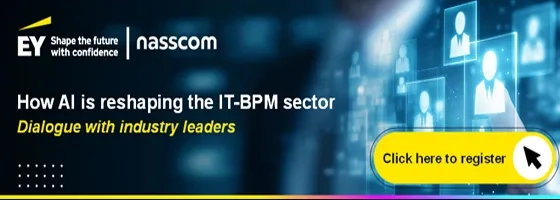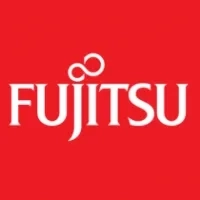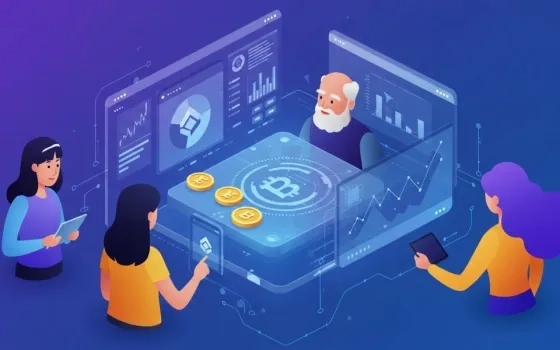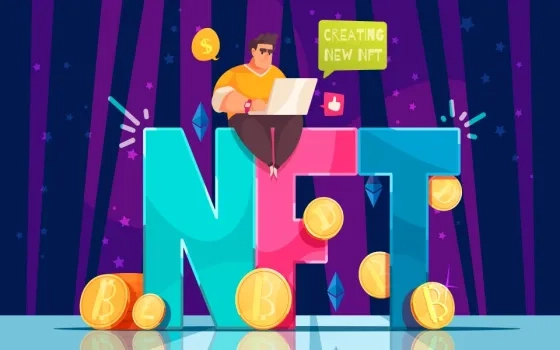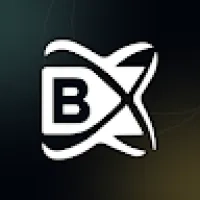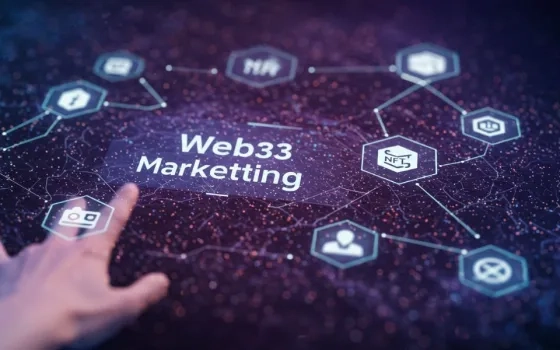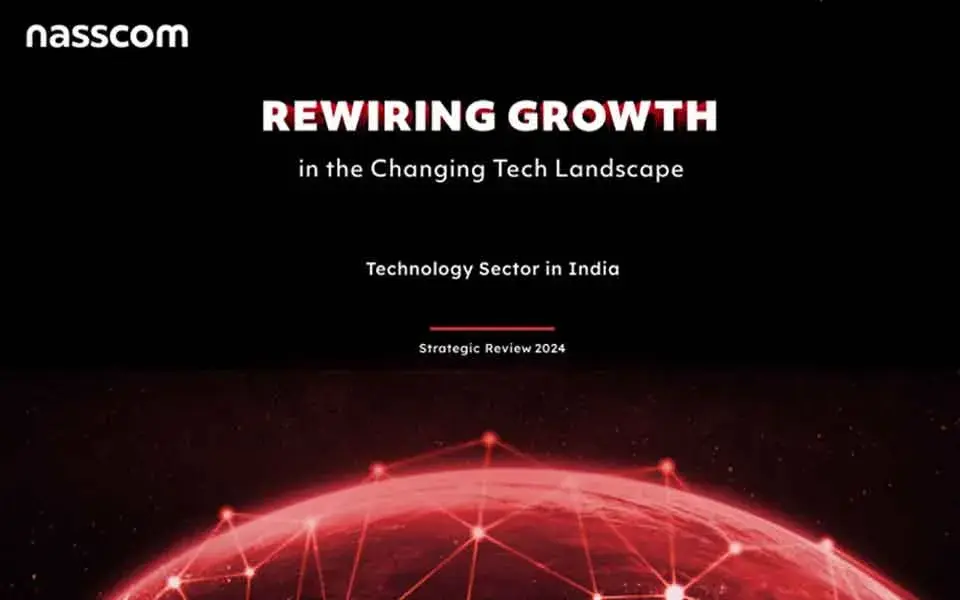1. Introduction
Explanation of Web 1.0 and Web 2.0
The internet has undergone a massive transformation since its inception, with two distinct stages of evolution - Web 1.0 and Web 2.0. Web 1.0 was the first generation of the internet, offering a static and one-dimensional platform that primarily provided information to users through text-based websites, with limited options for interaction. Web 2.0 marked a significant departure from the static nature of Web 1.0, introducing dynamic and interactive web applications, user-generated content, and social media platforms. This enabled users to engage with each other unprecedentedly, revolutionizing how people connect and share information online. Facebook, Twitter, and YouTube emerged as platforms during this stage, characterizing the shift towards Web 2.0.
Overview of Web 3.0 and its importance
Web 3.0 is the next evolution stage of the internet, promising a more intelligent, decentralised, and secure web. Also known as the semantic web, it uses technologies such as artificial intelligence, machine learning, and blockchain to create a more interconnected online ecosystem. Web 3.0 can revolutionize various industries, including finance, healthcare, and education, by enabling new forms of collaboration, data sharing, and trust-building. For example, Web 3.0 can facilitate decentralised (DeFi) finance by enabling peer-to-peer transactions without intermediaries. In healthcare, it can ensure patient data's secure and efficient sharing.
This article argues that Web 3.0 represents a significant shift in how we interact with the internet and can potentially revolutionize the digital landscape. By emphasizing decentralization, security, and intelligence, Web 3.0 can potentially create a more equitable and democratic online ecosystem that empowers individuals and communities. As this emerging paradigm takes shape, it's crucial to understand its implications and opportunities and embrace it responsibly and informally.
2. What is Web 3.0?
Definition
Web 3.0 is a set of emerging technologies and concepts that aim to create a more decentralised, intelligent, and secure web. It builds upon the foundation of Web 2.0 but takes it to the next level by leveraging advanced technologies such as blockchain, artificial intelligence, and machine learning. Web 3.0 is often referred to as the "Semantic Web" or the "Decentralised Web" due to its emphasis on semantic data, decentralised infrastructure, and new forms of trust.
Key characteristics
Several key features characterize Web 3.0, setting it apart from Web 2.0. One of the most significant differences is its emphasis on decentralization, which gives users more control over their data and online interactions. Web 3.0 promotes interoperability between systems and networks, enabling seamless communication and collaboration between various entities. Another characteristic is intelligence, which is enabled by advanced technologies such as artificial intelligence and machine learning, allowing for more personalised and efficient interactions. Finally, Web 3.0 strongly emphasizes trust, which is facilitated by decentralised technologies such as blockchain.
Comparison with Web 2.0
Web 2.0 and Web 3.0 are two stages in the evolution of the internet, with significant differences. Web 2.0 is a centralised, data-driven model emphasizing user-generated content, social media, and mobile devices. In contrast, Web 3.0 is built upon decentralised infrastructure, emphasizing user privacy and control while being more intelligent and secure. Web 3.0 aims to create a more seamless and integrated ecosystem, facilitate interactions between people and machines, emphasize interoperability, and transform how we interact with the internet.
3. Technologies of Web 3.0
Blockchain technology
Blockchain technology revolutionizes transactions by enabling secure, transparent, and tamper-proof transactions without intermediaries through a decentralised ledger system. The advent of Web 3.0 poises blockchain to disrupt various industries, ranging from decentralised finance (DeFi) to digital identity and healthcare records management. Ethereum, Bitcoin, and NFTs are examples of blockchain-based platforms and applications that support smart contract functionality, enable decentralised digital currency transactions, and store unique digital assets on the blockchain, respectively.
Semantic web
The semantic web is a set of technologies and principles that enable machines to understand the meaning of data on the web. In Web 3.0, the semantic web is crucial for improving data interoperability, discovery, and reuse. The semantic web can use standardized metadata and ontologies to help machines better interpret and integrate data from different sources. This, in turn, can enhance the efficiency and accuracy of applications such as search engines, recommendation systems, and chatbots.
Other Technologies: Internet of Things and AI
Although not a specific part of Web 3.0 technology, the Internet of Things (IoT) is often included as one of the many technologies that can help immensely Web 3.0 ecosystem and has the potential to enable new forms of data collection, processing, and sharing in Web 3.0, which can lead to more personalised and contextualized experiences for users. Organisations can also use it to enhance efficiency and reduce supply chain management, logistics, and smart city costs.
AI can enhance Web 3.0 technologies and applications by improving data analysis, decision-making, and automating processes. It can also create intelligent interactions between users and applications. It supports Web 3.0's focus on decentralization, interoperability, and distributed ledgers for a more secure and transparent internet.
4. Advantages of Web 3.0
Decentralization and democratization of data
Web 3.0's decentralised architecture offers a solution to centralised data control and ownership. It enables the decentralization and democratization of data, empowering users to store and share their data on decentralised networks, resulting in greater ownership and control. The use of public blockchains ensures greater transparency, making it difficult for any single entity to manipulate or control the data. Decentralised data storage protocols like IPFS and Filecoin are excellent examples of this architecture.
Increased security and privacy
Web 3.0 aims to address security and privacy issues that have plagued Web 2.0, such as data breaches, identity theft, and surveillance. Web 3.0's decentralised and cryptography-based solutions can enhance security and privacy. Decentralised security and privacy solutions include encryption, multi-factor authentication, and zero-knowledge proofs, which allow users to authenticate their identity without revealing sensitive information. With Web 3.0's self-sovereign identity solutions, users have greater control over their data and online identity.
Enhanced user experience and personalization
Web 3.0's user-centric approach can enhance the user experience and personalization. With Web 3.0's decentralised and self-sovereign identity solutions, users can own and control their data, leading to a more personalised experience. Web 3.0 also enables personalised content delivery and decentralised marketplaces, allowing users greater control over the content they consume and purchase products.
Improved interoperability
Web 3.0's Interoperability solutions can improve the integration and connectivity of different decentralised networks and protocols. This leads to greater efficiency, scalability, and innovation in the Web 3.0 ecosystem. Examples of interoperability solutions include cross-chain communication protocols and decentralised exchanges, which allow users to trade cryptocurrencies across different blockchains. Interoperability also enables integrating of different decentralised applications and networks, leading to a more seamless and integrated user experience.
5. Challenges and limitations of Web 3.0
Complexity and cost of implementation
Implementing Web 3.0's decentralised architecture can pose significant complexity and cost challenges, especially for large-scale applications. The development of new infrastructure and standards and the adoption of new protocols and technologies can contribute to this complexity and cost. Some of the major challenges faced by Web 3.0 projects include scalability, interoperability, and usability. These issues could limit the growth and adoption of Web 3.0 technologies.
Need for interoperability standard.
Interoperability is crucial for the success of Web 3.0, but the lack of standards and protocols can hinder its development. The fragmentation and incompatibility of decentralised networks and protocols can create challenges for developers and users. The Interledger Protocol and Blockchain Interoperability Alliance are working to establish interoperability standards and initiatives to overcome these challenges.
Regulatory and legal challenges
Web 3.0 faces significant regulatory and legal challenges that hinder its growth and development. Unclear laws, intellectual property disputes, and security and privacy concerns create uncertainty and discourage investment and innovation. The debate over cryptocurrency classification and the legality of decentralised applications are just a few of the regulatory and legal issues that Web 3.0 projects face.
Resistance from established players in Web 2.0
Web 3.0 faces tough resistance and competition from established players like tech giants and social media platforms, who hold significant power and influence in the current Web 2.0 landscape. This makes it challenging for new Web 3.0 projects to gain traction and adoption. Implementing innovative strategies, such as community building and disruptive innovation, is essential for Web 3.0 initiatives to succeed. Decentralised social media platforms and financial applications like DeFi are emerging as examples of how Web 3.0 can disrupt and challenge the dominance of established players.
6. Applications of Web 3.0
Decentralised finance (DeFi)
Blockchain technology powering Web 3.0 has given birth to decentralised finance (DeFi), a new way to access financial services. DeFi protocols on blockchain networks offer decentralised lending, borrowing, and trading without intermediaries. DeFi provides faster transactions, lower fees, and greater accessibility than traditional finance. Popular DeFi applications include Uniswap, Aave, and Compound.
Digital identity
Web 3.0's decentralised identity solutions aim to give users control over their data and online identity. Decentralised identity solutions, such as Self-Sovereign Identity (SSI) and decentralised identity wallets, are built on blockchain technology and provide privacy, security, and interoperability. These solutions enable users to manage their identities without intermediaries.
Supply chain management
Web 3.0 has the power to transform supply chain management. Blockchain technology can bring more transparency, traceability, and efficiency to supply chain networks. This means real-time tracking and automated workflows that can help create more sustainable and efficient supply chains. Many companies are already using Web 3.0 to make supply chains more streamlined and secure.
Social media and content sharing
Web 3.0 is set to revolutionize how we use social media and share content. Decentralised platforms offer users more privacy, control, and revenue-sharing opportunities. Content-sharing protocols, such as IPFS, allow for decentralised and censorship-resistant sharing. Peepeth, and IPFS are some examples of Web 3.0 platforms that are changing the landscape of social media and content sharing.
7. Future of Web 3.0
Potential impact on industries and society:
Web 3.0 can revolutionize industries and society with its decentralised, secure, and user-centric internet. DeFi can make finance more accessible, cheaper, and faster. Supply chain management can become more transparent, improving product quality and safety. Decentralised social media can provide better privacy, control, and revenue sharing for creators. Web 3.0 can also improve efficiency and innovation in healthcare, education, and government.
Technological advancements and innovations:
Web 3.0 is expected to bring technological advancements and innovations, including better scalability, interoperability, and privacy solutions. Integrating new consensus algorithms, like proof of stake, could enhance energy efficiency and security. Additionally, adopting Layer 2 solutions, such as state channels, may lead to faster transaction speeds and reduced fees. We expect more personalised and intelligent applications with further artificial intelligence and machine learning advancements. The rise of new technologies, such as decentralised autonomous organisations (DAOs), could completely change how organisations are structured and governed. Overall, Web 3.0 can drive the next wave of innovation and revolutionize multiple industries.
Opportunities for entrepreneurs, startups, and Individuals:
Web 3.0 brings exciting possibilities for entrepreneurs and startups to revolutionize traditional industries. With its decentralised and permissionless architecture, Web 3.0 can reduce entry barriers and open up significant opportunities for new players to enter the market. Entrepreneurs can use Web 3.0's user-centric approach to create more personalised and engaging applications, attracting a larger user base. Moreover, Web 3.0's adoption of new business models, such as tokenization and decentralised finance, could lead to new revenue streams and investment opportunities, enabling entrepreneurs to tap into previously untapped markets. As a result, Web 3.0 can potentially drive a new era of innovation and disruption for startups and businesses alike.
Web 3.0 allows for easier commercialization. Decentralized marketplaces let people buy and sell without intermediaries like any e-commerce to buyers, giving users greater control over data usage, while decentralized applications (dApps) also built on a blockchain network, but their functionality is determined by smart contracts and can serve different purposes enable innovative ways to interact with data, such as selling personal health data to researchers or monetizing social media activity. Web3.0 combines these approaches, empowering individuals to commercialize data while maintaining control.
Additionally, Web 3.0 requires new infrastructure to support the decentralized ecosystem. Entrepreneurs and startups can develop technologies like blockchain scaling and decentralized storage to support Web 3.0 applications.
Challenges and risks to overcome:
Web 3.0 faces various challenges that must be addressed to unlock its full potential. These challenges include implementation costs, complexity, lack of interoperability standards, legal and regulatory barriers, resistance from established Web 2.0 players, and cybersecurity threats. In addition, Web 3.0 must also tackle challenges such as limited adoption and awareness, lack of governance frameworks, energy consumption, user experience, and limited use cases.
8. Conclusion
Summary of key points
Web 3.0 is the future of the internet, with a decentralised and distributed architecture that gives users greater data ownership, control, and privacy. It leverages blockchain and decentralised protocols to create transparent, secure, and interoperable applications and services. Web 3.0's features include decentralization, the democratization of data, enhanced security and privacy, improved user experience, and personalization. However, realizing its full potential requires overcoming obstacles such as complexity and high implementation costs, the need for interoperability standards, legal and regulatory challenges, and resistance from established players in Web 2.0. By addressing these challenges, Web 3.0 can unlock immense potential and revolutionize how we interact with the internet.
Implications for businesses and individuals
Web 3.0 presents significant opportunities and challenges for businesses and individuals. For businesses, Web 3.0 introduces new ways to innovate and create value through decentralised applications, services, and platforms. It also provides cost-saving opportunities, improved efficiency, and new revenue streams. However, it requires a shift in mindset and infrastructure and navigating regulatory and legal challenges.
For individuals, Web 3.0 empowers greater control over personal data and online identity and enhances security and privacy. It also provides opportunities for participation in decentralised networks, digital asset ownership, and financial inclusion. However, it requires technical literacy, caution, and awareness of potential risks and challenges.
Call to action for further exploration of Web 3.0:
The potential impact and opportunities of Web 3.0 make it crucial to continue exploring, experimenting, and collaborating. This involves developing interoperability standards, regulatory clarity, and user-friendly applications and services. It also requires embracing disruptive innovation and collaboration across industries and communities.
Education and awareness campaigns are necessary to promote decentralization, while energy-efficient blockchain technologies and alternative energy sources can address energy consumption concerns. Developing user-friendly interfaces and identifying new use cases can enhance the user experience and drive adoption.
The challenges faced by Web 3.0 require a collective effort from stakeholders in the ecosystem. Through collaborative efforts, including the establishment of new standards and best practices and investment in research and development, the full potential of Web 3.0 can be realized. By doing so, we can create a more equitable, transparent, and innovative society by decentralizing power, ensuring privacy and security, and promoting financial inclusion and innovation, and internet for the future.

